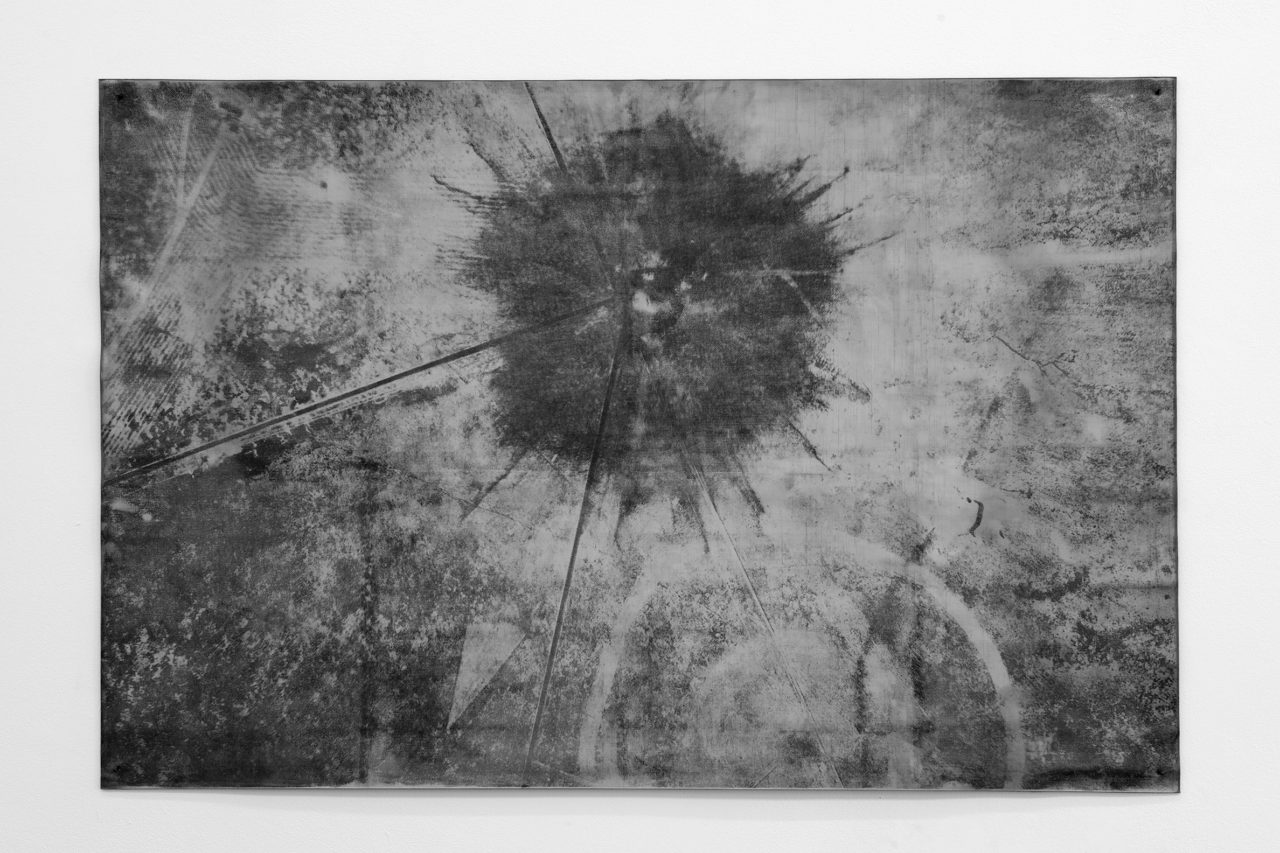
Trinity Test 3 (2016), Meessen De Clercq, Brussels, Belgium, 2016 (photo: Philippe de Gobert)

Trinity Test 3 (2016), Meessen De Clercq, Brussels, Belgium, 2016 (photo: Philippe de Gobert)
The first atomic bomb, nicknamed ‘The Gadget’, was detonated at the Trinity Test Site near Alamagordo in New Mexico (US) on 16 July 1945. It was part of the Manhattan Project, set up to develop a new weapon of unprecedented power.
'Trinity Test' is an aerial view of the site after the explosion. The black and white image is transferred on a slab of lead, the final stage of all uranium. The half-life with which uranium (U) decays to form lead (Pb) is 4.46 billion years, making uranium-lead or U-Pb dating one of the most refined and exact methods for determining the age of materials such as rocks or carbon. This radiometric dating technique looks for traces of radioactive impurities which allow the precise calculation of when matter was created or formed. 'Trinity Test' is a triptych dealing with the subjectivity of history and memory, visualising the inherently different accounts of this world-changing event.